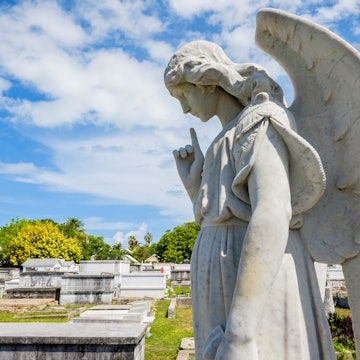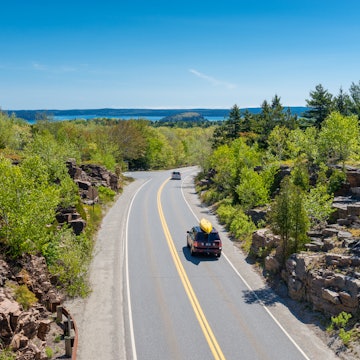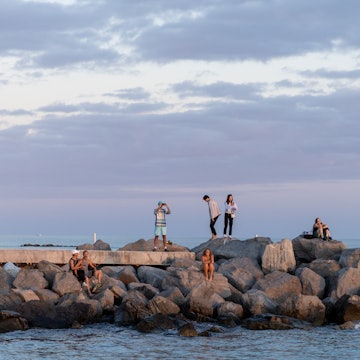
Long-term stays are trending. Here’s how KAYAK can help you make the most of one
Sponsored by

Nov 17, 2020 • 4 min read

With remote work increasingly mainstream, more travelers are exploring long-term stays © Matthew Leete / Getty Images
COVID-19 might have momentarily halted global travel, but it didn't rid travelers of their wanderlust. Now, with holidays on the horizon and vacation days to burn, adventurous jet setters are looking for a safe way to plan their next big adventure. The solution? Long-term stays.
With an increasing number of people working and learning remotely, scheduling an extended workcation has never been more manageable. According to Gallup, the number of days US workers telecommute to the office has nearly doubled since 2019. Some companies – including KAYAK – have given employees the green light to work from home until summer 2021. As a result, the life of a digital nomad is gaining popularity.
Recent data from the travel search engine KAYAK.com shows a significant increase in searches for travel that lasts from seven to 20 days. Flight searches for trips between 14-20 days are up 26% compared to the same period last year, and accommodation stays for 14-20 days are up 43%. The micro-cation – where a month-long itinerary gets crammed into one weekend – is yesterday's news. Today, trendsetting travelers are moving into the slow lane and learning to take their time.

The benefits of long-term stays
According to a LinkedIn study from July, 70% of workers are forgoing their vacation days this year, and according to Monster, over two-thirds of workers are experiencing burnout. In a climate clouded by the coronavirus, long-term stays may offer a silver lining.
A new study conducted by researchers from NYU and the University of Miami found that people feel happier when they go to new places and have diverse experiences. So this year, with the definitions of “work” and “home” more malleable than ever, people can take advantage of a work-and-play hybrid. It's time to try taking conference calls from a Cancun cabana or turn the open road into your personal playground.
But the joy of this new travel trend isn't about checking off bucket-list destinations and rushing to crowded tourist sites, particularly while practicing physical distancing. It's about traveling slowly, with an emphasis on "being" instead of "doing;" it's about savoring each second and remaining present in the current moment.
In a moment defined by uncertainty, sticking to one spot for an extended period avoids the pitfalls of ever-changing flights, travel bans, and mandatory quarantines, and gives travelers the chance to live like locals. By planting yourself in the center of a foreign neighborhood for a week, a month, or more, you start to see a city as more than the sum of its main attractions and gain a deeper appreciation for the destination.

Plan your trip with KAYAK
The first step to living like a local is staying in a place that feels like home – a feat made easy by KAYAK.com's comprehensive search engine. In addition to hotels, KAYAK boasts over 450,000 unique rentals and creative accommodations in the United States alone. Whether you're looking for a cozy cabin in the Catskill mountains or a medieval castle once owned by Henry VIII, the KAYAK’s filters will help even the pickiest traveler find their ideal pad.
First, choose your destination – say you want to spend a few weeks in a Florida beach condo. Next, set the “Property type” filters to include rentals and unique stays like “condo,” “bungalow” and “houseboat.” You can also filter for “Freebies” like free breakfast, parking, internet or cancellation. That search will yield amazing properties, like this beachside condo.

The best places to stay long-term
As soon as you've navigated any travel restrictions for your desired location (use KAYAK’s interactive map as a starting point), it's essential to consider what sort of space you'll need to make the most of an extended stay. For a family planning to attend work and school under the same roof, consider a multi-room home with a strong wifi connection, like this swanky space in Park City – Utah's iconic ski resort town.
If you require a warmer clime to get you through the oncoming winter, kick back at this three-bedroom house in Kauai – Hawaii's wildest island. Anyone leaning into the digital nomad life may want to consider taking a trip to Barbados, where remote workers without a visa can stay for a year thanks to the Barbados Welcome Stamp program.
You might also like:
Why remote work vacations are the biggest travel trend
How digital nomads can find friends and a real-life community
Work from the Caribbean with this new digital nomad visa in the Cayman Islands
Sponsored by Kayak
As a travel entertainment and inspirational media outlet, we sometimes incorporate brand sponsors into our efforts. This activity is clearly labeled across our platforms.
This story was crafted collaboratively between Kayak and Lonely Planet. Both parties provided research and curated content to produce this story. We disclose when information isn’t ours.
With sponsored content, both Lonely Planet and our brand partners have specific responsibilities:
-
Brand partner
Determines the concept, provides briefing, research material, and may provide feedback.
-
Lonely Planet
We provide expertise, firsthand insights, and verify with third-party sources when needed.













